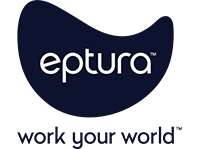
Occupancy is unique because it can be a valuable metric for many departments in a large enterprise. Some can use it to improve space planning and enhance employee experience, while others need it to optimize maintenance scheduling and resource allocation. The current challenge is how resource intensive it is for teams to generate actionable insights. 37% of businesses use 11 or more employees to collate, analyze, and report on data, according to Eptura’s 2025 Workplace Index report. The solution is a unified worktech platform that helps automate data capture and centralize the sharing of insights.
Why occupancy metrics matter to enterprise teams
Occupancy is a key metric for teams across the enterprise. Occupancy data helps the real estate team optimize space and ensure cost-effectiveness by providing insights into how employees are using space. Corporate services can use occupancy data to plan and manage facilities more efficiently, ensuring they meet the needs of the workforce. The finance department benefits from occupancy metrics by incorporating space-related costs into budgeting and forecasting.
Although there are many teams leveraging the same metric, they’re working with it in different ways, including:
- Information technology (IT): Allocate resources more efficiently, for example ensuring there are enough network ports, power outlets, and Wi-Fi access points in areas with high occupancy. Optimize the cooling and power usage in data centers, reducing energy costs and improving efficiency.
- Human resources (HR): Design workspaces that better meet employee needs. For example, if data shows certain areas are underutilized, they can be repurposed for collaboration spaces or quiet zones.
- Maintenance and operations: Schedule routine checks and repairs during low-occupancy periods, minimizing disruptions. Optimize heating, ventilation, and air conditioning systems, reducing energy consumption and costs.
- Corporate real estate (CRE): Optimize space usage by identifying areas that can be repurposed or downsized, and high-traffic areas that may need expansion. Provide leverage in lease negotiations, helping the company justify its space requirements and potentially negotiate better terms.
Stronger space planning and lease negotiations
With accurate data on how and when employees use spaces, the department can uncover inefficiencies and opportunities for improvement. For example, if employees do not use certain areas of the office, the CRE team can adjust the layout to better meet the needs of employees, enhancing the overall workspace and maximizing the value of the leased space.
Real-time occupancy insights are especially valuable in predicting future space needs. By analyzing trends in space usage, the CRE department can make informed decisions about whether to expand, downsize, or maintain the current footprint. A forward-looking approach helps reduce the risk of over-leasing, which can be a significant source of unnecessary costs. Utilization metrics, for example, can highlight peak usage times and areas that are consistently busy, allowing the CRE team to negotiate leases that are both cost-effective and aligned with the organization’s growth plans.
Improved employee experience
By leveraging data on how employees use the office space, HR can make informed decisions that foster better collaboration and productivity. For example, understanding which areas are most frequently used for impromptu meetings can guide the placement of collaborative spaces, ensuring they are accessible and conducive to teamwork.
Occupancy insights can help HR track the relative popularity of various amenities, such as break rooms, fitness centers, and quiet zones. By identifying which amenities are most frequently utilized, HR can make data-driven decisions to enhance or expand these offerings. For example, if the data shows that the break room is a hub of activity, investing in more comfortable seating and better refreshments can significantly improve the employee experience.
Maximized maintenance scheduling
Occupancy insights help support a strategic approach to maintenance, ensuring resources are used efficiently and issues are addressed proactively. By understanding which areas of a facility are most frequently used, teams can prioritize their efforts, focusing on high-traffic zones that are more likely to experience wear and tear. This approach not only ensures that critical areas remain in top condition but also helps in preventing small issues from escalating into major problems.
Occupancy insights can also play a role in reducing downtime. By scheduling maintenance during low-traffic periods, facilities can minimize disruptions to daily operations. For example, if data shows that a particular meeting room is rarely used on Friday afternoons, maintenance activities can be scheduled during that time without affecting productivity. Strategic planning enhances the facility management process and improves the overall user experience by ensuring that spaces are always in optimal condition when needed.
Teams can also leverage occupancy data to help identify underutilized spaces, which can lead to cost savings. Areas that are rarely used don’t require the same level of maintenance as those with high foot traffic. By reallocating resources to more critical areas, facilities can reduce maintenance costs.
Balanced resource allocation and power cooling in data centers
By leveraging occupancy data, the IT team can better understand server usage patterns, enabling them to predict power needs more accurately. The process not only helps reduce energy waste but also ensures the data center operates at peak efficiency.
Traditional cooling systems often operate at a fixed rate, which can lead to unnecessary energy consumption. With real-time occupancy data, data centers can implement dynamic cooling strategies that adjust based on actual demand, saving on immediate costs and extending the lifespan of cooling equipment by avoiding unnecessary wear and tear. By optimizing cooling based on server activity, data centers can maintain optimal temperatures, which is essential for preventing hardware failures and ensuring data integrity.
The challenges of interdepartmental collaboration
Companies often face obstacles when trying to implement and then scale collaboration between departments. Often, the larger the organization, the wider the gaps between teams.
Challenges can include:
- Data silos: Departments often operate with their own data systems and processes, leading to isolated information that is not easily shared or accessible.
- Communication barriers: Different departments may use different communication tools and channels, making it difficult to share information and coordinate efforts.
- Technology integration: Combining different technologies and systems across departments can be complex and time-consuming.
- Geographic distances: In large enterprises, departments may be in different regions or even countries, making face-to-face communication and collaboration more challenging.
When different departments can’t work together, it becomes harder to make progress on larger projects. In fact, according to the 2025 Workplace Index report, over half of organizations reported that one of the biggest barriers to deploying AI was “insufficient cross-platform integration/data consolation.”
How a single platform for maintenance and workplace management enhances cross-departmental collaboration and data sharing
Implementing a single platform for maintenance and workplace management can help address cross-departmental collaboration challenges. By centralizing all maintenance and workplace data in one platform, departments can access a unified and consistent view of occupancy and utilization metrics, ensuring everyone is working with the same, up-to-date information, reducing the risk of redundant data entry and inconsistencies. For example, the real estate management team can share space utilization data with the finance department to inform budgeting decisions, while the IT department can use the same data to optimize resource allocation. Seamless data sharing fosters a more cohesive and aligned organization.
A single platform also enhances communication and collaboration by providing a centralized hub for all relevant information and tools. A company can use the platform to efficiently manage resource constraints by providing real-time insights into space and resource utilization, enabling more efficient planning and allocation. By streamlining technology integration and providing a unified solution, a single platform helps an organization address the complexities of integrating different data, making it easier for all departments to collaborate effectively and achieve their shared goals.
Customer success: Mobile telecommunications giant improves multiple office spaces with a single solution
Vodafone Group, based in Berkshire, England, is the world’s largest mobile telecommunications network company, operating in 25 countries and partnering in 42 more, with annual revenues of $121 billion. Leadership wanted to cut costs, particularly by optimizing their extensive office space. Project goals included:
- Maintaining occupancy rates at set targets
- Accelerating space and employee audits
- Enhancing data visualization
Vodafone implemented Archibus by Eptura, allowing them to efficiently generate quarterly space and occupancy reports, integrate data with AutoCAD drawings, and manage individual and group moves.
Facility managers can now quickly generate an overview of their UK campus, monitor buildings with occupancy rates below 95%, and manage about 7,000 employee moves annually. The software solution has helped the company cut the cost of managing over 1.4 million square feet of office and telephone exchange sites. It’s now also possible to conduct quarterly censuses across the UK in just one day — previously a weeks-long process. The company optimized operational processes and enhanced strategic decision-making, contributing to their organizational goal of reducing overall management costs.
Read the complete success story.





